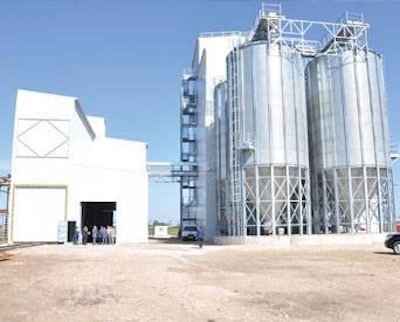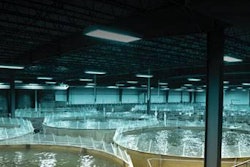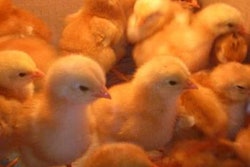
In the coming years, Kazakhstan will focus on the development of its feed industry. The country has officially committed itself to improving the sustainability of its agricultural production, according to reports from the country’s officials.
Official statistics indicate that the self sufficiency of Kazakhstan’s feed production remains below 40 percent. The country’s total livestock production demand stands at approximately 2.8 million tons of compound feed, but the volume of production has not exceeded 1.2 million tons in recent years.
However, a large-scale feed industry modernization program is under way. Conducted by the government, it will presumably aid in improving the country’s feed industry and boost it to a level of at least 60 to 70 percent by 2020, when the total demand on the domestic market should reach 3.2 million tons.
Inefficient manufacturing capacities
A paradox exists in Kazakhstan’s feed industry. While the country’s production capacity exceeds the actual volume of production by nearly two times, a large portion of its capacity is currently not in operation. According to representatives from the country’s agricultural ministry, most of the old feed mills were constructed while the country was part of the Soviet Union; their manufacturing lines with very high production costs and low efficiency.
“Currently, in Kazakhstan, there are 69 enterprises involved in the production of compound feed,” explains the country’s Deputy Minister of Agriculture Gulmira Isayeva. “They have the total production capacity of about 1.9 million ton[s] per year, but the actual loading of these plants according to our estimates is standing at only 43 percent.”
Representatives of the ministry remind that during the last two decades, the feed industry in the country has faced a major crisis that almost ruined it.
In 1990, Kazakhstan produced 4 million metric tons of compound feed per year, including 1.3 million tons of poultry feed. However, after the fall of the Soviet Union, it turned out that the largest part of feed mills could not operate in the context of free market conditions. As a result, by 1997, production had dropped to 211,700 tons or by 95 percent compared to 1990’s volume.
In general, these old plants only operate at 25 percent of their full production capacity. In experts’ opinion, the volume of production can be boosted in coming years, but only with the large investments in the modernization of the production process.
“Compound feed production enterprises, which had been commissioned during 1970 to 1980, are often unable to provide consumers with high-quality feed at affordable prices, and more than half of their capacities today are idle,” reports Zheksenkul Alimkulov, CEO of Kazakhstan’s Scientific-Research Institute of Processing and Food Industries (KSRIPFI). “As the result many livestock farms in the country today are forced to buy feed from abroad.”
The production cost of the old feed mills exceeds the standard market cost of feed production by 20 to 30 percent, estimate market researchers. In such a situation, launching the unused capacities would be unprofitable.
Low efficiency is, in fact, a common problem for the feed industries of all the countries of post-Soviet Union block. However, it is expected that the modernization program will improve the overall picture of the country’s feed industry in the coming years.
Growth prospects
Kazakhstan has already begun implementing a modernization program in its animal feed industry, one which will include work on several fronts. According to Isayeva, these measures will almost double feed production over the next few years to exceed 2 million metric tons.
“To ensure the quantum growth of livestock production and support its effective forms, it is necessary to increase the volume of domestic feed production up to 2 million tons per year,” states Isayeva. “The capacities already available in the country may provide such growth, but many plants require modernization.”
In addition, according to the government’s existing plans to 2020, the country aims to build at least six feed mills and 48 lines for feed production, with a total capacity of about 600,000 to 700,000 metric tons. The total cost of these projects will be around US$2.5 billion, and it is expected that most of these funds will be allocated by private investors.
Also, the representatives of the agricultural ministry say that the country’s feed industry will benefit from the production of several alternative ingredients domestically. In particular, the country’s meat processors are set to supply about 4,000 metric tons per year of meat-and-bone meal to the country’s market of feed ingredients.
It is expected that the processing of food waste – such as sugar beet pulp, filter cake, bards and some other production — will secure the supply of an additional 1 million metric tons of feed units.
Eyeing premix production
The program also aims to improve the country’s self sufficiency in premixes and protein-and-vitamin mineral supplements (PVMS).
Kazakhstan did not produce them at all between 1996 and 2008. However, in 2010, the production of PVMS in the country amounted to 22,000 metric tons; in 2011, it rose to 28,000 tons. In 2013, production volumes reached 39,000 tons. By 2020, it is expected to almost double and reach 70,000 tons per year, according to the official statistics and plans of the agricultural ministry.
The same situation is observed with premixes, of which production in 2011 amounted to 12,200 metric tons and jumped to 19,000 tons in 2013. Today, the country is only about 30 percent self-sufficient in premixes and PVMS; it is planned that by 2020, this figure will rise to 55 percent.
However, at the same time, experts remind that the industry still observes a number of problems related with the deficit of other raw materials on the domestic market, in particular soybeans (see sidebar).
“The Ministry of Agriculture of the Republic and the country’s scientific organizations need to take steps to find alternative local sources of protein with the link of different cropping patterns, selection of varieties of cereals, legumes and oilseeds for the needs of the feed and livestock industries,” says Alimkulov.
The years ahead
In general, experts believe that the prospects of the country’s feed industry are bright. However, in coming years, they will largely depend on state support and a good investment climate in the country.
At the same time, there are some concerns that, in the near future, the country may face economic problems as the country funds most of its budget from the sale of oil. Kazakhstan’s economy is largely dependent on oil prices on the world market, which have significantly dropped in recent years.
The country’s officials did not admit that this fact may force the government to cut the support of agricultural industry and hamper the development prospects of the feed industry.
















